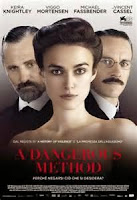 Neuroscience is of course the study of the brain, but many of us often forget about the beauty and the art behind the study of our conscience and how our brain functions. It truly is a fascinating topic. This ball of gooey flesh is the core of our existence, and it's what makes each one of us the beautiful creatures that we are. Now, artists like Karen Norberg and Margerie Taylor are using their fixation on the human brain to create art from its physical beauty and wonder. These artists actually used real MRI images, dissections, and publications as research to create these scientifc works of art.
Neuroscience is of course the study of the brain, but many of us often forget about the beauty and the art behind the study of our conscience and how our brain functions. It truly is a fascinating topic. This ball of gooey flesh is the core of our existence, and it's what makes each one of us the beautiful creatures that we are. Now, artists like Karen Norberg and Margerie Taylor are using their fixation on the human brain to create art from its physical beauty and wonder. These artists actually used real MRI images, dissections, and publications as research to create these scientifc works of art.V.S. Ramachandran is the Director of the Center for Brain and Cognition, and Distinguished Professor with the Psychology Department and Neurosciences Program at the University of California, San Diego. He has been studying the relationship between art and neuroscience for years. Specifically, he has noted the universal human appreciation for art, and he believe he can explain the human appreciation for abstract art especially. Ultimately, he comes to the conclusion that we don't really know. He has been learning about the brain by analyzing its dysfunction, and he is optimistic about his research, but he cannot make any definitive claims about how our brains perceive art.
 As discussed in lecture, Pierre Paul Broca was a French medical doctor and anthropologist who used post-mortem analysis to determine the specific part of the brain that is associated with language and speaking. Broca was so revered by the science world that that part of the brain is now known as Broca's convolution. Broca was also significant considering his contributions to the standardization of scientific measurement. Over his years he invented 27 various instruments that take measurements of the body. Broca understood the art of the brain and he dedicated his entire life to trying to understand the human mind.
As discussed in lecture, Pierre Paul Broca was a French medical doctor and anthropologist who used post-mortem analysis to determine the specific part of the brain that is associated with language and speaking. Broca was so revered by the science world that that part of the brain is now known as Broca's convolution. Broca was also significant considering his contributions to the standardization of scientific measurement. Over his years he invented 27 various instruments that take measurements of the body. Broca understood the art of the brain and he dedicated his entire life to trying to understand the human mind. The movie A Dangerous Method, mentioned in lecture, is a modern drama wrought with ideas and theories belonging to Dr. Sigmund Freud, specifically his talking cure. This movie questions psychoanalysis and its use to try and solve psychological problems. It is all about neuroscience and the various theories and ideas on the topic. This movie is a direct example of the art of filmmaking using knowledge about the brain and its functions to fill the details and themes throughout the movie.
 Dr. Albert Hofmann was a famous chemist who was known for his study of psychadelics and their potential medical uses. He is often known as the "father of LSD." Hofmann believed that we need a new concept of reality and a new set of values in order for positive change to be made in the world. It just so happens that Hofmann believed LSD would be the best avenue to achieve this. He made a scientific investigation into the ancient Greek cult of Eleusis, suppressed in AD400 after 2,000 years, in which participants took a secret mind-altering plant ingredient. Hofmann's contributions to the studies of the human brain and how certain drugs can alter our state of consciousness or affect the way we perceive things in our brain are a tremendous gift to the world of science.
Dr. Albert Hofmann was a famous chemist who was known for his study of psychadelics and their potential medical uses. He is often known as the "father of LSD." Hofmann believed that we need a new concept of reality and a new set of values in order for positive change to be made in the world. It just so happens that Hofmann believed LSD would be the best avenue to achieve this. He made a scientific investigation into the ancient Greek cult of Eleusis, suppressed in AD400 after 2,000 years, in which participants took a secret mind-altering plant ingredient. Hofmann's contributions to the studies of the human brain and how certain drugs can alter our state of consciousness or affect the way we perceive things in our brain are a tremendous gift to the world of science. Works Cited:
Norberg, Karen. "The Museum of Scientifically Accurate Fabric Brain Art." The Museum of Scientifically Accurate Fabric Brain Art. Boston Museum of Science, 2 Mar. 2013. Web. 17 May 2015. <http://neuroscienceart.com/>.
Meiser, Morgan. "This Is Your Brain on Art." The Smart Set. Drexel University, 17 Mar. 2011. Web. 17 May 2015. <http://thesmartset.com/article03161101/>.
"Pierre Paul Broca." Human, Speech, Language, and Brain. N.p., n.d. 17 May 2015. <http://psychology.jrank.org/pages/97/Pierre-Paul-Broca.html>.
"A Dangerous Method." IMDb. IMDb.com, n.d. Web. 17 May 2015. <http://www.imdb.com/title/tt1571222/>.
Reed, Christopher. "Dr. Albert Hofmann." TheGuardian.com. Theguardian Science, 30 Apr. 2008. Web. 17 May 2015. <http%3A%2F%2Fwww.theguardian.com%2Fscience%2F2008%2Fapr%2F30%2Fdrugs.chemistry>.

No comments:
Post a Comment